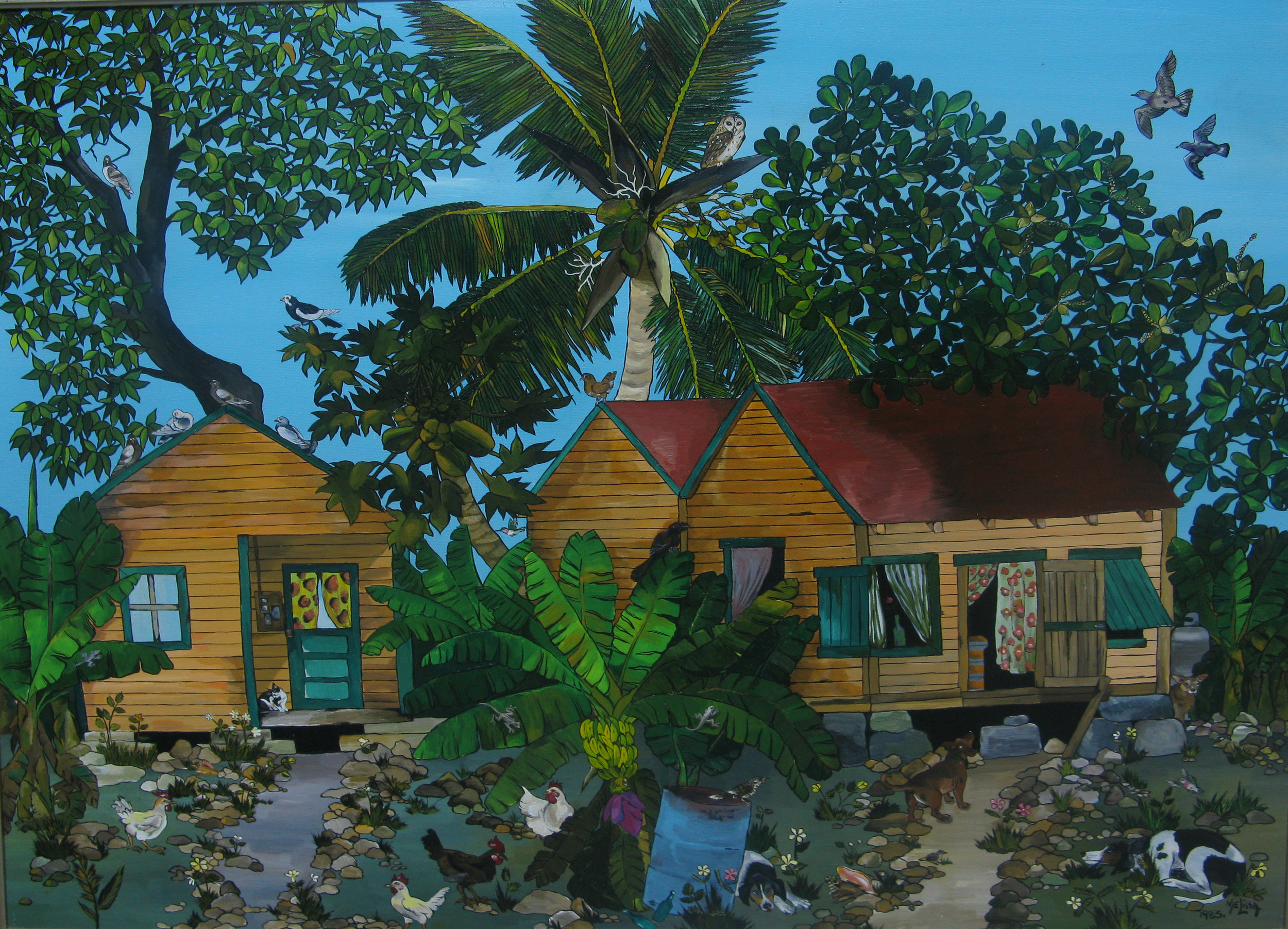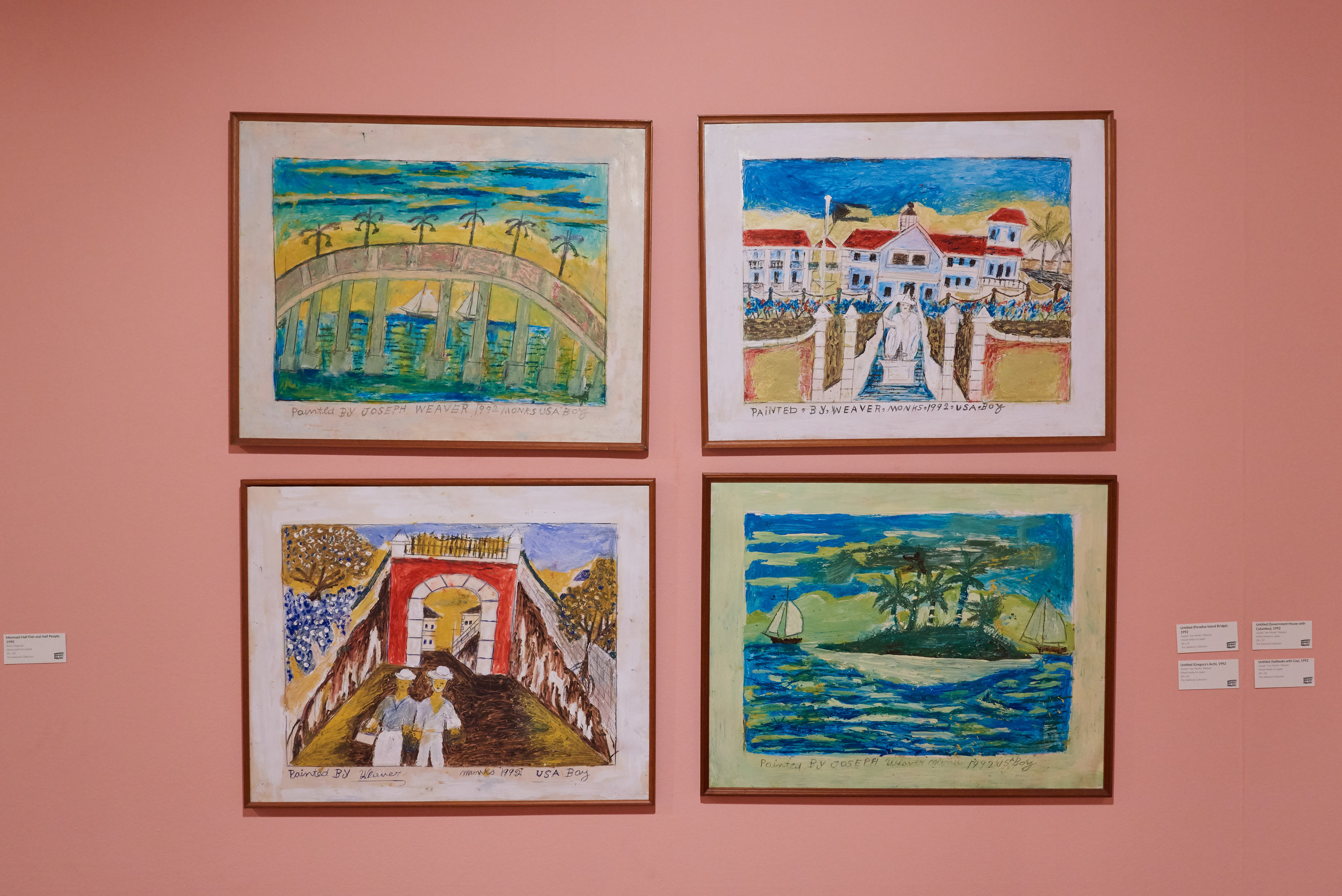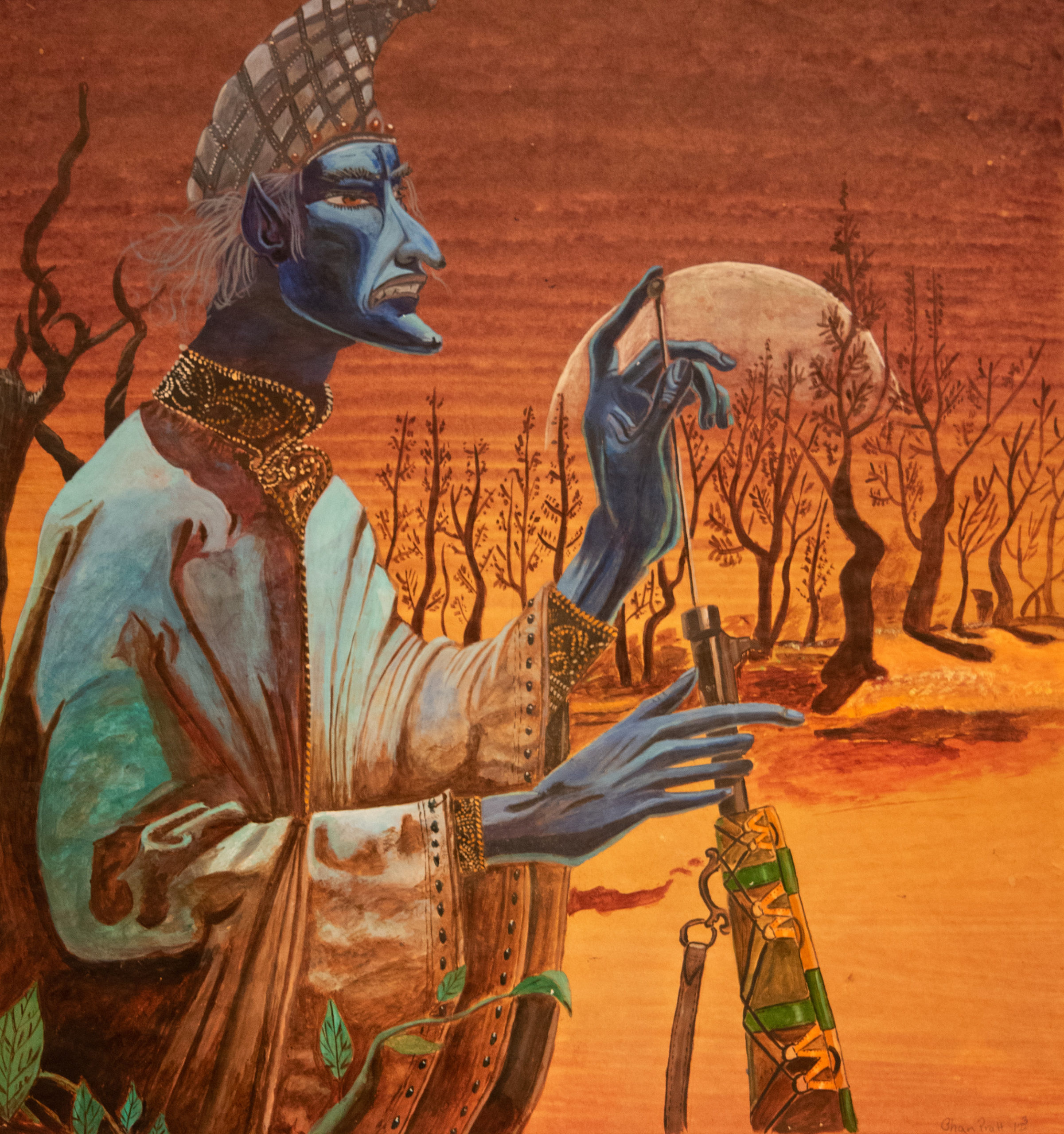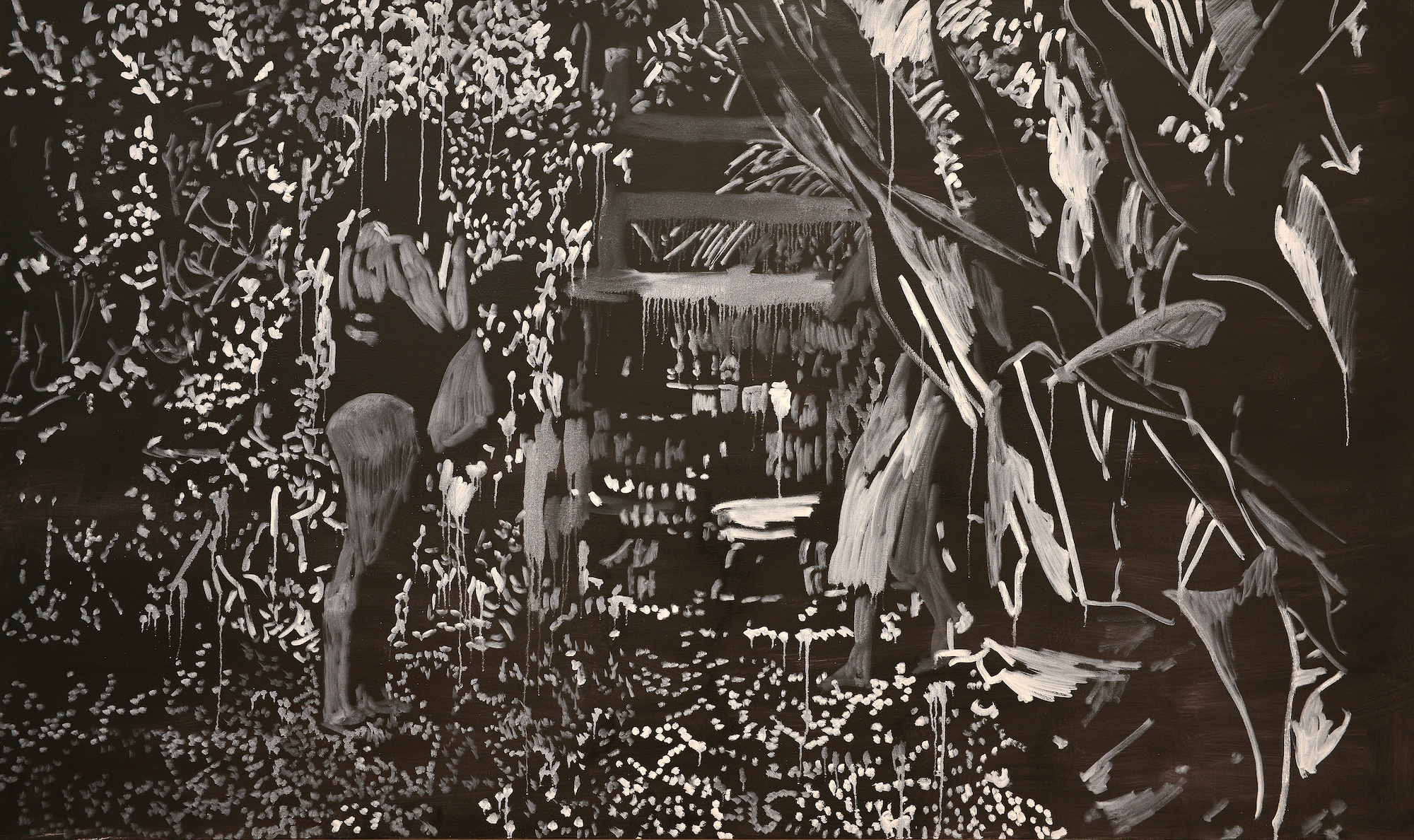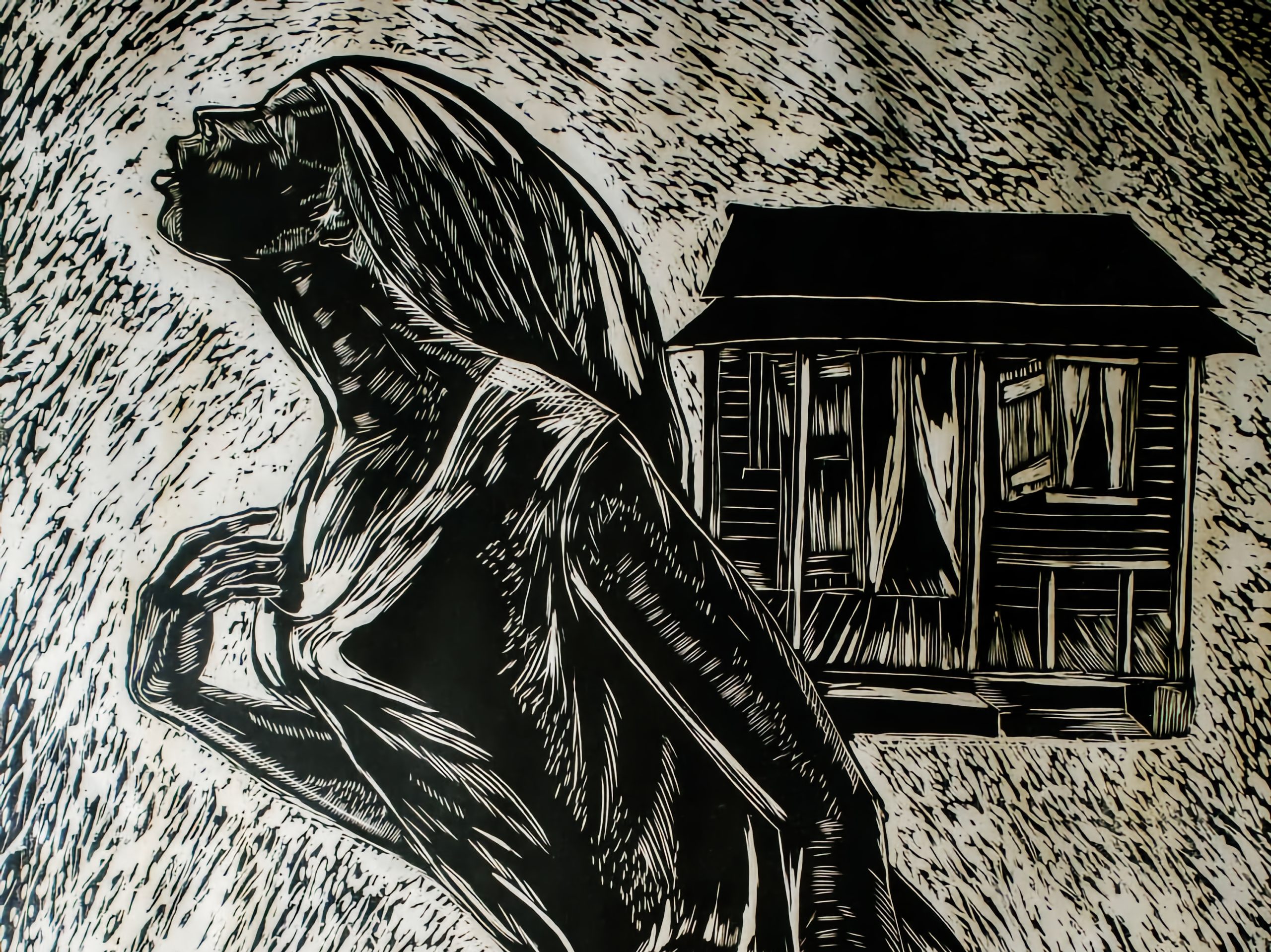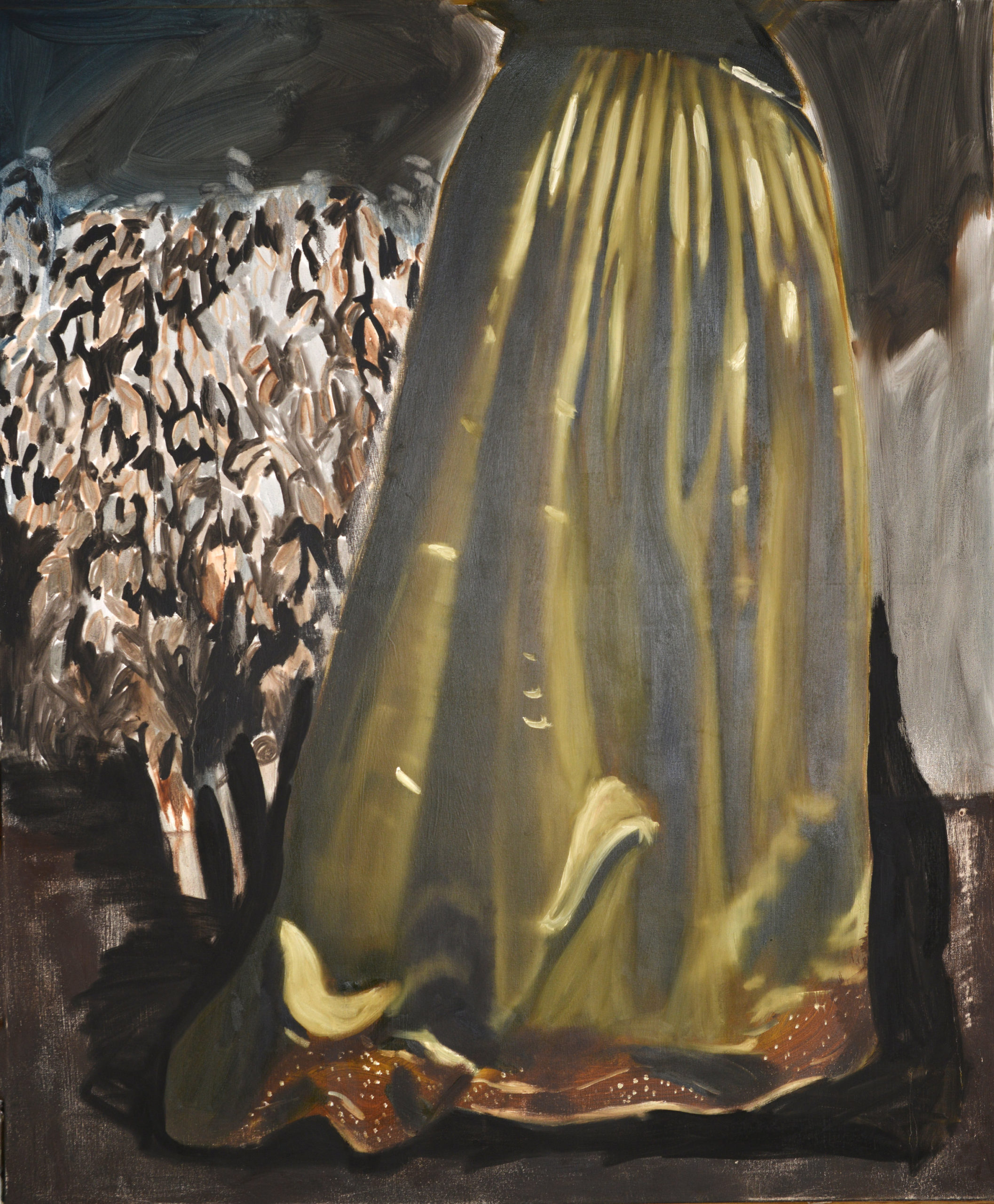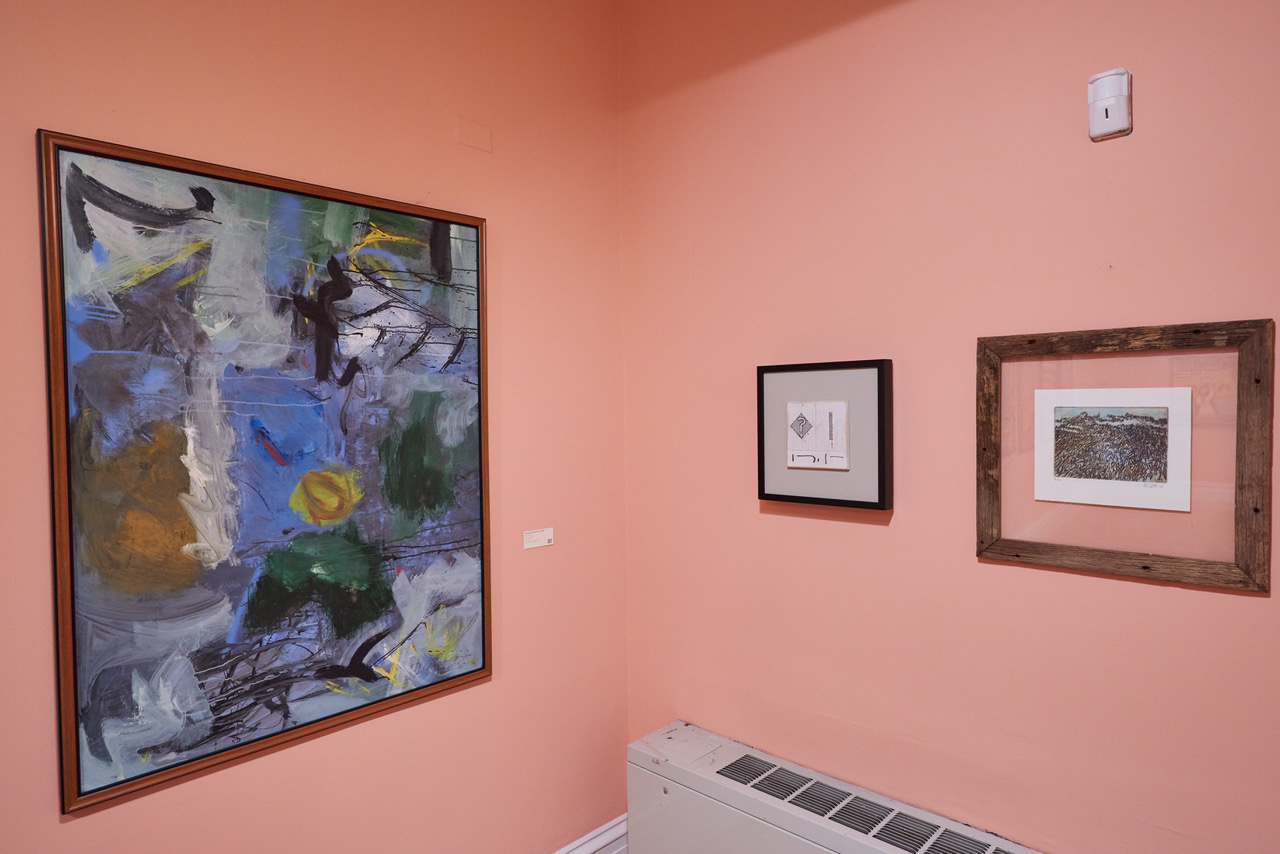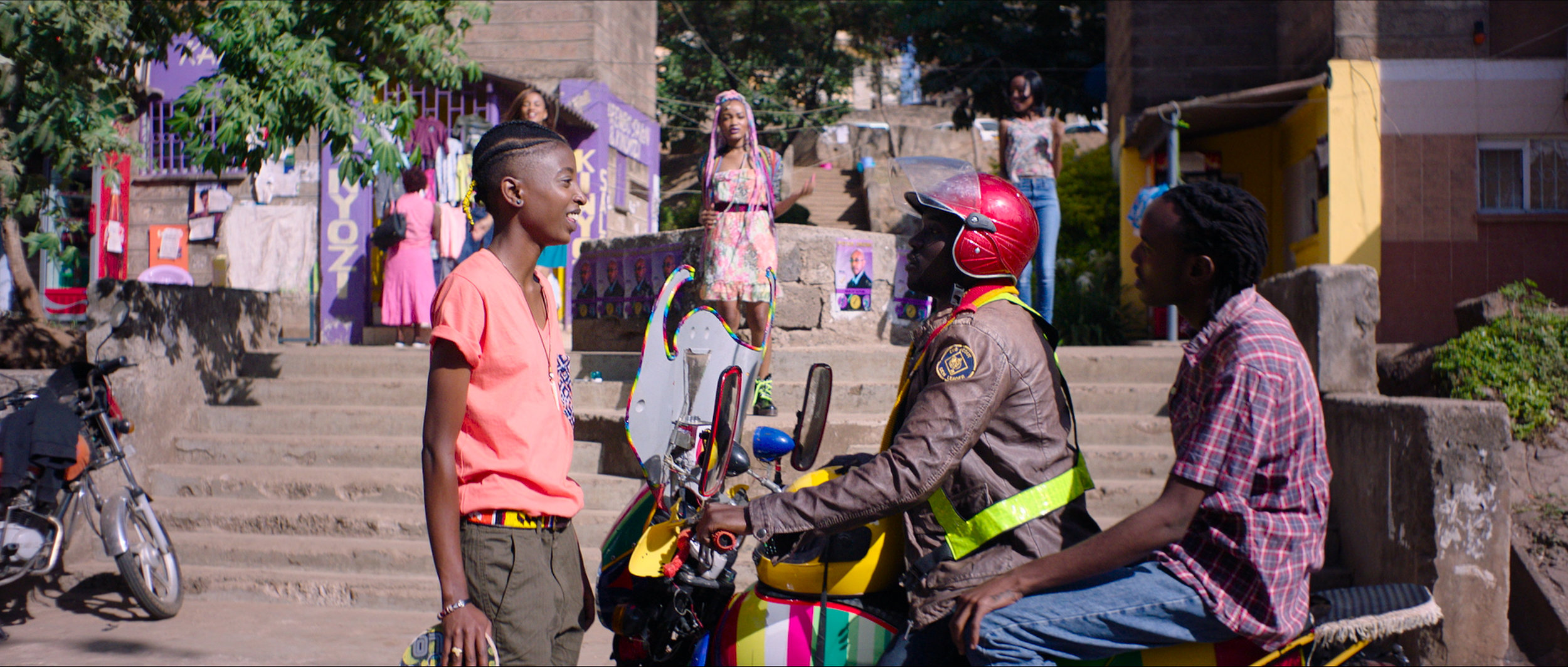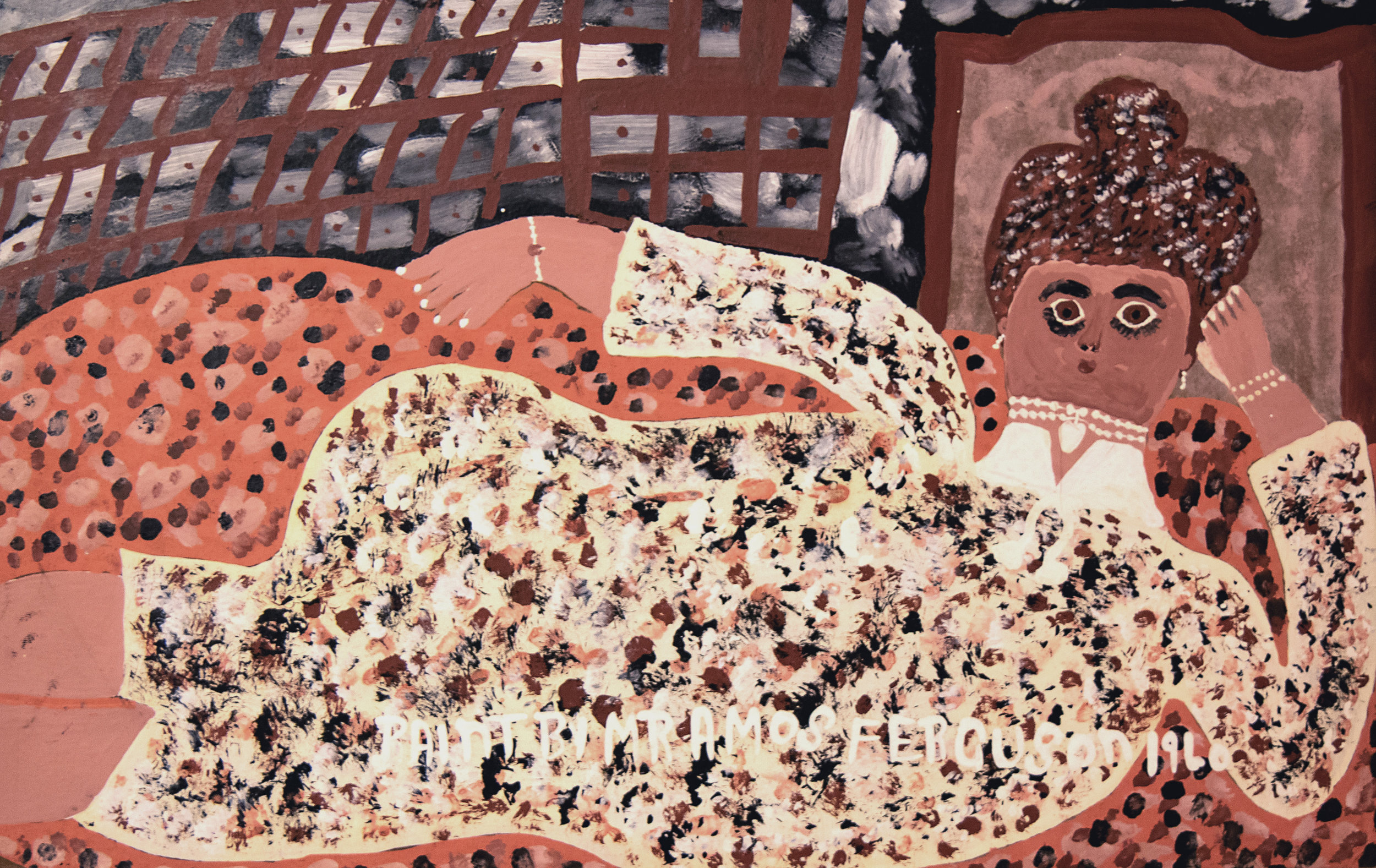By Kelly Fowler, Guest Writer. An island landscape in the mind of a non-native may include picturesque coastal scenes of blue and turquoise shaded waters gradually transitioning to crystalline, onto shallow shores of powder white sandy beach, and further to lush foliage of coconut and palm trees. To the native Bahamian, the island landscape may vary considerably. The landscape may range anywhere from the quintessential narrow, yet neat streets featuring well-kept, board houses nestled among vibrant Bougainvillea, Poinciana and golden shower trees, to scenes of markets, daily life and the historic Over-the-Hill community where centuries-old silk cotton grow, fruit trees flourish and royal Bahamian potcakes roam freely. Both the outsider’s notion and the insider’s experience are represented in Bahamian art. Melissa Maura’s 1983 oil on canvas painting entitled Wellington Street Dwelling is a glimpse into an insider’s experience of island life and landscape. The painting draws the viewer into the lived experience of the native Bahamian and invites the onlooker to reflect on the diversity of the island landscape and how the landscape has changed over time.
All posts by Natalie Willis
UB and NAGB formalise agreement for the arts
University of The Bahamas (UB) and the National Art Gallery of The Bahamas (NAGB) have solidified an agreement that will facilitate academic and cultural interchange in arts education, research and collaboration, thereby strengthening the relationship between the two national institutions.
Dialect and Diaspora: The Intuitive Art of Joseph “Joe Monks” Weaver
When we look at the work of intuitive artists such as Amos Ferguson, Netica “Nettie” Symonette, or Joseph “Joe Monks” Weaver, we see just that – people who move beyond the “proper grammar” of Eurocentric art history and the canon of art practice, choosing instead to communicate in an art dialect of their own making.
A Choice Landscape: The Early Work of the Late Chan Pratt
By Natalie Willis. There are a few names that come to mind for us when we think of the quintessential, traditional, picturesque Bahamian landscape: Hildegarde Hamilton, Alton Lowe, Eddie Minnis, Dorman Stubbs, Ricardo Knowles, and the well-collected (but not quite always at the forefront of our minds), Chan Pratt. Landscape painting is quite a contentious genre of painting for The Bahamas and certainly for the rest of the Caribbean region, and this is for good reason. The colonial photography and postcards and paintings of days-gone-by were instrumental in framing and re-shaping the region as an idyll for tourist consumption, and this growing industry would later become the backbone and difficult foundation of many Caribbean economies.
A Death Foretold: Whitehead & Pratt on Beauty and Loss
By Dr Ian Bethell-Bennett, The University of The Bahamas. Beauty, as we began two weeks ago, heals souls and allows us to come to a higher place where we feel more human, connected, communal and loved. Nature, green trees, and shade along roads allow us to walk in and explore the special areas and spaces around us. This exploration is seen in Jean Rhys’ novel Wide Sargasso Sea (1966), and in Tessa Whitehead’s work, the creek (2018) as beauty envelopes us in its natural form. When cement covers every inch of land, the soul is taken out of life. Singer Gloria Estefan’s Mi Tierra (1993), similar to Coulibri, the main location in Wide Sargasso Sea speaks of the loss, longing and nostalgia for a home that we have lost the deep connection to and the healing that comes from revisiting even if only metaphorically, metaphysically or through imagination.
From the Collection: “Ain’t I A Good Mother?”
By Kelly Fowler, Guest Writer. Maxwell Taylor honours Black Bahamian mothers. As with many things, the concept of motherhood does not always translate neatly or equally cross-culturally. While it is not unusual for a society to have defined gender roles and to encounter expectations based on them, women of marginalised groups tend to face harsher criticism of their lifestyles for not meeting the concept of womanhood or motherhood that is associated with the “ideal.” Naturally, this would lead to feelings of inadequacy and questions of being good or good enough. Bahamian master artist, Maxwell Taylor, delves into this subject matter in much of his work, but his black and white woodcut print on paper entitled Ain’t I A Good Mother?, 2003 is one that addresses Black motherhood specifically.
Reconnecting to the Divine Feminine
By Blake Fox. Calling upon fear, surrender and angst, Tessa Whitehead presents us with an incredibly personal impression of her dreams, memories, and experiences in a transcendent series of figurative paintings in her first solo exhibition in The Bahamas titled “…there are always two deaths.”
The Role of the Arts in Addressing Climate Change
By Blake Fox. Currently on display through June 2, 2019, at the National Art Gallery of The Bahamas (NAGB), the Permanent Exhibition “Hard Mouth: From the Tongue of the Ocean” focuses on how both verbal and visual language have shaped us as a country. One could argue that The Bahamas is a phonocentric culture, meaning speech is given precedence over written or visual work. Because of this emphasis on speech rather than written or visual work, it is no doubt that The Bahamas has a very rich oral culture. While Bahamians rely heavily on oral communication to pass down culture and traditions, visual and written works are just as crucial in communicating cultural beliefs and values in societies. This exhibition highlights Bahamian artwork that serves as a conduit to bridge the gap between our visual and oral culture in The Bahamas.
“Rafiki– more than just friends” Honouring and fighting for love.
By Kevanté A.C. Cash, NAGB Correspondent. I am reminded of the challenges of life, even in moments of sheer bliss, reminded of the ways we cannot be, even in moments we are. I am reminded of the complexities of living in love a as Black, queer, artist, teacher, mother, sister, lover, friend, because it is all of these that comprise the human experience, yet none of these at all. I am reminded of themes of tried and proven love – over and over again in films such as Rafiki which in Swahili means “friend”. I would argue that the title itself was an act of intentionality and irony, as African culture, at a minimum, does not acknowledge the simple existence of queer love, in such coding lovers in terms such as “friend”. Above all of these though, I am reminded of just how boundlessly love can flow if given the space to manifest into something beautiful. Rafiki reminds me of the ways and trying times of love.
Sitting Pretty Political: Amos Ferguson and the Reclining Women of Art History
By Natalie Willis One of the key poses for women in classical painting is the reclining nude. It’s become such a huge part of the canon of European historical paintings, no doubt in part to the patriarchal obsession with the naked female form. Nonetheless, it’s been rich territory for many an earth-shattering painting in art history: Titian’s “Venus of Urbino” (1532-34), Jean Auguste Dominique Ingres’ “Grande Odalisque” (1814), and Manet’s infamous “Olympia” (1865), all of which changed the art world’s reading of the pose each time. It should come to us as no surprise then that Amos Ferguson, our beloved (and often misunderstood) intuitive painter from Exuma, might want to make his own mark in such territory, though perhaps more conservatively given his very religious background.
